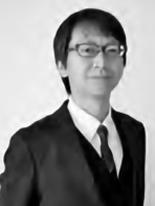Space Transportation Technology Directorate
Separation Test Completed
on H3 Launch Vehicle Payload Fairing
On December 17, 2019, a fairing separation test was conducted on the H3 Launch Vehicle, which is currently under development, at Kawasaki Heavy Industries' Harima Works in Hyogo Prefecture. "Fairing" refers to the covering at the top of a rocket for storing payloads such as satellites and probes. After the rocket is launched and reaches outside the Earth's atmosphere, the covering splits into two like a shell opening up and is released from the body. The purpose of the test is to verify that the fairing, the largest in Japan with a total length of 16.4 m and a diameter of 5.2 m, splits apart as planned by activating the separation mechanism under the actual flight condition.
Gunpowder was used in the test to instantaneously separate hundreds of bolts connecting the fairing when a separation signal was issued. The separated fairing parts on the sides moved in beautiful arcs and successfully landed on cushions. IKAIDA Hiroshi, Associate Senior Researcher of the H3 Project Team, says the key to the success of the test was that the team "conducted a thorough rehearsal in advance including checks on ignition signals using simulated pyrotechnic materials." IKAIDA continued: "We were reminded of the importance of conducting end-to-end testing in not just this test but in all rocket development operations."

the huge fairing separates into two parts like a shell opening up and is released from the body.
IKAIDA and his team have made active efforts to incorporate new technologies into the H3 Launch Vehicle fairing: "Using carbon fiber reinforced plastic (CFRP) as material for the main structure made it easier to fabricate complex curved configurations. The smooth, streamlined fairing reduces aerodynamic drag and enhances launch performance. The insulation used to protect fairings from heat was switched from the conventional spray-on type to an adhesive type which we became experienced with during the Epsilon Launch Vehicle development. This eliminated the need for the specialized coating booth and made it possible to provide insulation using simple equipment."
Going forward, the team will manufacture and assemble of fairing parts for the test vehicle that are scheduled to be transported to Tanegashima Space Center around the fall of 2020. Together with Japanese companies, JAXA will continue to make an all-out effort to develop the H3 Launch Vehicle with the aim for the first launch in FY 2020.
Profile

|
|
|---|
All the images are copyrighted ©JAXA unless otherwise noticed.
- Home>
- Global Activity>
- Public Relations>
- JAXA’s>
- JAXA's No.80>
- Space Transportation Technology Directorate